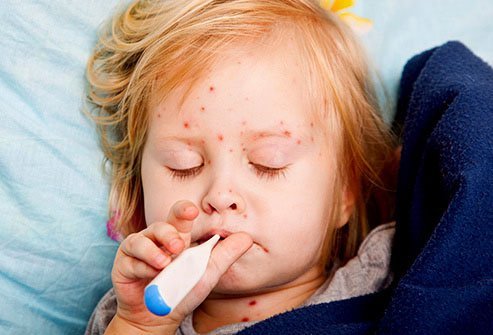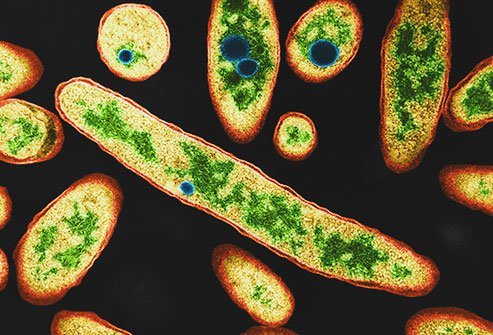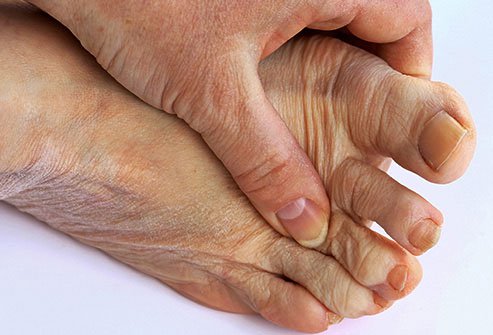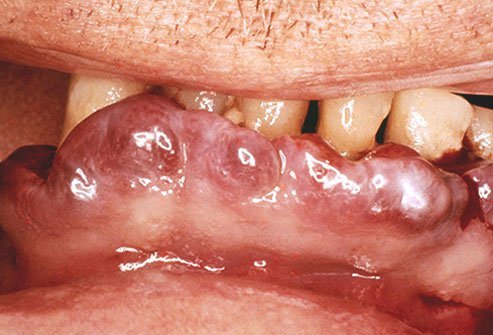Infectious Disease: Are These Historical Illnesses Coming Back?
Bubonic Plague

Think the "black death" is a disease for medieval history books? Every year, people still die of bubonic plague. A teen in Mongolia died of the disease in July of 2020 from eating an infected rodent. It is extremely rare in the US, but infections still happen now and then. In 2020 a person from Colorado was infected by a squirrel. Cases are mostly clustered around the four corners region of the American West. In the US, plague gained a foothold in wild rodents in the early 20th century, according to the CDC. Antibiotics can cure this deadly bacterial infection, but without them infection can quickly lead to death.
Tuberculosis (TB)

It killed writer George Orwell and composer Frederic Chopin. Many people think it disappeared after effective treatments were developed. But tuberculosis (TB) still kills. In fact, it's still one of the top 10 causes of death worldwide, according to the WHO (World Health Organization). TB infections are now mainly confined to 30 countries, with India and China accounting for the most infections overall. While treatment is possible, it takes six months on average, and during that time the infected person remains contagious. However, drug-resistant strains have developed, and treatment for these can take two years or more.
Syphilis, Gonorrhea, and Chlamydia

These sexually transmitted infections (STIs) are caused by bacteria. Antibiotics in the 20th century helped prevent the spread of these diseases. But more recently, some of these bacterial infections have shown resistance to antibiotics. The worst cases have come from bacteria that cause gonorrhea; some bacterial strains cannot be cured by any available antibiotics. This has forced doctors to approach STIs in new ways. The best treatment is prevention. Use a condom to help prevent the spread of these dangerous infections.
Scarlet Fever (Scarlatina)

Scarlet fever usually appears in kids ages 5-15, but anyone can get this bacterial infection. It's caused by group A strep, a common bacterium found naturally on skin. Once a leading cause of child mortality, scarlet fever infections dramatically decreased because of antibiotic treatment in the 20th century. However, in Asia and England the condition has made a surprising and confusing comeback. Scientists don't know why scarlet fever has risen in these places. It could be the dominance of an antibiotic-resistant strain, environmental changes, a change in human immunity or some unknown factor.
Measles (Rubeola)

Before the vaccine was widely distributed in the late 20th century, nearly every child in America got the measles. And every year thousands of children died from this highly infectious disease. In 2000, measles was declared "eliminated" from the US. But it came back in a big way in 2019, with more than 1,200 cases reported. Most people who get measles are unvaccinated, and the virus can easily spread in communities with large numbers of unvaccinated people.
Mumps

In the past, hundreds of thousands of Americans caught mumps infections each year. And every four to five years an epidemic would break out, infecting even more. This viral disease is spread through saliva droplets, and causes fever, weakness, and characteristically swollen saliva glands. In rare cases it can cause serious conditions, including encephalitis and deafness. Despite vaccination beginning in the late 1960s, periodic mumps outbreaks still occur worldwide. One such outbreak occurred in the US in 2006, with over 6,500 cases reported, mostly among students at Midwestern college campuses. Since then mumps outbreaks have occurred every year. MMR vaccination remains the best way to prevent mumps infection.
Whooping Cough (Pertussis)

Coughing fits are the hallmark of whooping cough, a highly infectious bacterial illness. This disease is particularly harmful to babies, for whom it can be deadly. But anyone can catch it, and it produces a cough that can last for months. Although a vaccine for whooping cough has existed since the 1940s, new outbreaks have caused researchers to look more closely at the way vaccines are administered. New recommendations have included immunization of infants, as well as booster shots for adults. Despite widespread vaccination, more than 300,000 deaths are caused by whooping cough every year.
Legionnaires' Disease

This disease gets its name from its first known outbreak. In summer 1976, a group of more than 4,000 American Legion members met in Philadelphia. After the meeting, more than 200 became sick with what was then a mysterious infection, and 34 died. The culprit, a previously unknown bacterial species, has been causing more and more sickness. Every year since 2000, more than 1,000 cases have been reported. The number steadily grew until in 2018 nearly 10,000 cases were reported. However, a recent committee of the National Academies of Sciences, Engineering, and Medicine estimated the actual number to be sometimes 10 times higher than reported. The reason for the increase in cases is unknown, though there are several theories. For one, US water pipelines are aging and allowing the bacteria to spread by air conditioning mists, and this could allow the bacteria safe harbor. For another, the US population is aging, making us more susceptible to the disease.
Leprosy

Leprosy is a disease reported in ancient times in places like Egypt, China, and India. It is caused by slow-growing bacteria that can form growths, skin discolorations, and nerve damage. It may lead to numbness, disfigurements and blindness. But despite the development of a cure, leprosy hasn't disappeared. Today more than 200,000 new cases are reported each year, and five countries report 80% of new leprosy cases: India, Indonesia, Myanmar, Brazil, and Nigeria.
Polio

Polio is not making a comeback, but it has proven difficult to eradicate. In 1988 there were 350,000 cases worldwide. That number plummeted in 2013 to 407 cases. Today Nigeria, Afghanistan, and Pakistan remain as the last polio-endemic countries in the world. Polio causes paralysis for one in every 200 infected people, usually in the legs. And this paralysis can appear as long as 40 years after infection. Luckily, the polio vaccine has proven highly effective. Nearly all children who are vaccinated with the recommended dose become protected from the disease.
Gout

Gout, once called the "disease of kings," is increasingly common in the US. Gout rates rose by 70% between 1995 and 2008. This follows a decades-long increase as Americans have become older and heavier as a population. This form of inflammatory arthritis usually causes intense pain in the big toe. There is no cure for gout, but there are treatments to help prevent future flares.
Rickets

Rickets, a childhood disease, was essentially eradicated in the US in the mid-1900s. This bone deformity causes legs to curve, and may have been Tiny Tim's ailment in "A Christmas Carol." But more recently rickets has been on the rise globally, including some areas of the US. Babies who are exclusively breast-fed, whose mothers receive inadequate vitamin D, are more at risk. Children can receive more vitamin D from sunlight, as well as foods such as salmon, mushrooms, milk, and cod liver oil.
Scurvy

If you stop eating and drinking foods with vitamin C, within a month signs of scurvy can develop. It starts with fatigue and gum inflammation. But over time scurvy can cause joint pain as it weakens your body's connective tissues. Without treatment, scurvy can kill you. This disease used to be common among sailors until a surgeon in the British navy discovered that citrus could prevent it. Now in developed countries, scurvy is rare. But it still happens when people eat an extremely limited diet. This limited diet could be due to financial or mobility constraints, drug or alcohol abuse, fad dieting, or mental health problems, according to the NIH.
Infectious Disease: Are These Historical Illnesses Coming Back?
IMAGES PROVIDED BY:
- Thinkstock Photos
- Thinkstock Photos
- Thinkstock Photos
- Thinkstock Photos
- Thinkstock Photos
- Thinkstock Photos
- Thinkstock Photos
- Science Source
- Thinkstock Photos
- Thinkstock Photos
- Thinkstock Photos
- Science Source
- Science Source
REFERENCES:
- The Lancet: “Resurgence of scarlet fever in England, 2014–16: a population-based surveillance study.”
- Korean Journal of Pediatrics: “Reemergence of Mumps.”
- Nature Reviews Rheumatology: “The genetics of hyperuricaemia and gout.”
- Journal of Health, Population, and Nutrition: “Rickets: An Overview and Future Directions, with Special Reference to Bangladesh.”
- Rheumatic Diseases Clinics of North America: “Epidemiology of Gout.”
- CDC: “Disease or Condition of the Week: Scarlet Fever,” "What Would Happen If We Stopped Vaccinations?" "Frequently Asked Questions about Measles in the U.S.," "Measles (Rubeola)," "Mumps," “Global Immunization: Our Progress Against Polio,” “What Is Polio?” "Legionella (Legionnaires' Disease and Pontiac Fever)," "Plague: Frequently Asked Questions," "Plague: Maps and Statistics," "Pertussis (Whopping Cough)," "Respiratory Syncytial Virus (RSV)," "Mumps," "Morbidity and Mortality Weekly Report: Tuberculosis -- United States, 2016," "Disease of the Week: Scarlet Fever," "Scarlet Fever: A Group A Streptococcal Infection," "Syphilis Strikes Back," "STD Prevention Infographics," "Women and Children Deserve the Best Health Possible," "Gonorrhea - CDC Fact Sheet," "Chlamydia - CDC Fact Sheet," "Hansen's Disease (Leprosy)."
- National Library of Medicine: “Re-emergence of Pertussis: What Are the Solutions?”
- The College of Physicians of Philadelphia: "The History of Vaccines."
- Clinical Microbiology Reviews: “Legionnaires disease: Historical perspective.”
- The National Academies of Sciences, Engineering, and Medicine: “Management of Legionella in Water Systems.”
- Rising Star Outreach: “Leprosy.”
- NHS: "Legionnaires' disease."
- NIH: “Vitamin C,” “Vitamin D.”
- NIH GARD: “Rickets.”
- DermNet NZ: “Leprosy.”
- Healthmap.org, Disease Daily: "Black Death is Back: Second Plague Death Reported in Colorado," "Mumps: Making a Comeback," "Antibiotic Resistance and Tuberculosis."
- New Mexico Department of Health: "Plague."
- Mayo Clinic: "Respiratory Syncytial Virus (RSV)," "Influenza (flu)," "Mumps," "Rickets."
- American Lung Association: "What Is The Connection Between Influenza and Pneumonia?"
- The University of Queensland: "Scarlet Fever Making a Comeback."
- Arthritis Foundation: "Gout."
- Medscape: "Obesity Doubles Gout Risk, Reduces Age of Onset," "Scurvy."
- Arthritis and Rheumatology: "Prevalence of gout and hyperuricemia in the US general population: The National Health and Nutrition Examination Survey 2007-2008."
- WHO: "Growing antibiotic resistance forces updates to recommended treatment for sexually transmitted infections," “Leprosy Fact Sheet,” "Tuberculosis."
- U.S. National Library of Medicine: "Nutritional Rickets," "Resurrection of vitamin D deficiency and rickets."
- American Family Physician: "Rickets: Not a Disease of the Past."
© 1996-2022 WebMD, LLC. All rights reserved.
Source slideshow on OnHealth


